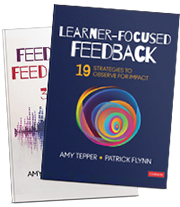As teachers we have all been there. Stuffed into a dimly lit room with a speaker droning on while bullet point after bullet point in a useless PowerPoint flies by. Educators often have no escape from mandated professional development. They get rewarded not with learning but a certificate of showing up. A badge of being able to sit through irrelevant details that do little to support our learning.
These memories, or nightmares more likely, came rushing back to me as I prepared a recent session I will facilitate at the12th Annual Summer Leadership Institute for CT Association for Public School Superintendents. CAPPS, using a framework developed by the Nellie Mae Education Foundation has rightfully been stressing student-centered learning in their work.

If we know to hold these truths for children, why do we forget this lesson when talk about teachers? Simply put, learning is learning and the need for personalized learning does not end once a person receives a diploma.
Personalized Learning for Students
The CAPSS diagram suggest that in order to ensure students have the knowledge, skills and disposition to succeed in college, career and civic life, they must be exposed to “deep learning”, typically centered on 21st Century skills and learning should be:
- “Personalized” i.e. recognizing that students learn and engage in different ways and that students benefit from individually paced, targeted tasks, that start from where the student is, formatively assessing existing skills and knowledge and address student needs and interests.
- “Student-Owned” i.e. incorporating student interest and skills and allowing for student to support their own as well as others’ progress in learning;
- “Competency Based” i.e. driven through clear demonstrations of proficiency in content and/or skill, and,
That learning can/should happen:
- “Anytime, Anywhere” i.e. occurring beyond the school day and even school year and well beyond the four walls of a classroom.
Personalized Learning for Adults
Let me begin with the simple tweak I made and then reinforce its importance. When I found the graphic, all I did was ask the question, “If I replace student with educator would all of the explanations about the need for personalized learning fit in the context of the adult learner engaged in professional learning? I think you know my answer is yes, but let me outline why.

What professional learning providers and, more importantly, the district decision makers who hire those professional learning providers have to begin to understand is that learning is learning is learning. In fact, research in adult learning supports the idea that it must be personalized, competency based, educator owned, and on-demand.
- “Personalized” i.e. recognizing that educators learn and engage in different ways and that educators benefit from individually paced, targeted tasks, that start from where they are in their current practice, formatively assessing existing skills and knowledge and addressing their professional learning needs.
- “Educator-Owned” i.e. incorporating teacher or administrator interest and skills and allowing for the educator to support their own as well as others’ progress in learning;
- “Competency Based” i.e. driven through clear demonstrations of proficiency in content and/or skill, and,
That learning can/should happen:
- “Anytime, Anywhere” i.e. occurring beyond the school day and even school year and beyond the four walls of a classroom.
See what I did there…
The argument that we should expect that educators should be fully prepared to meet the expectations of their professional responsibilities rings false. No one is perfect at all aspects of their work regardless of industry or profession. When it comes to teaching students of the 21st Century, the complexities of that responsibility requires constant attention and professional learning and the best teachers are those who never stop engaging in that learning. Same is said for those administrators charged with leading the creation of, and sustaining environments for that learning.
Four main points that professional learning providers and district/state decision makers need to focus on:
- Educators will forever require on-going, targeted learning that begins where they are and allows for a formative assessment of how they are progressing towards or improving their knowledge, skills, and dispositions. Professional learning designs that are not first built upon confirmed needs of the educator cannot and will not have an impact.
- Educators need to self-assess and self-address their own application of adult standards of performance and generate professional learning goals in ownership of their growth. This, in combination with routine and meaningful formative feedback can support adult learning.
- Educators will need to understand how their own learning needs translate into professional learning plans that map towards new levels of learning and that can be accessed routinely through open lines of communication and feedback from others. Tools and resources such as Professional Learning Maps become the best way to understand needs and applying to a cycle ensure the types of policies and structures for an organization to sustain on-going growth.
- And, finally, educators need to be able to access feedback in multiple environments and venues, not just in a hard chair in the cafeteria of their school surrounded by 90 of other members of their educational community.
More information can be found about the CT Association of Schools conference at the following link:



Leave a Reply